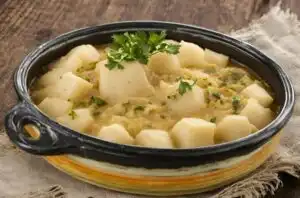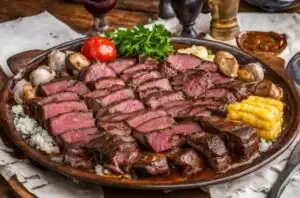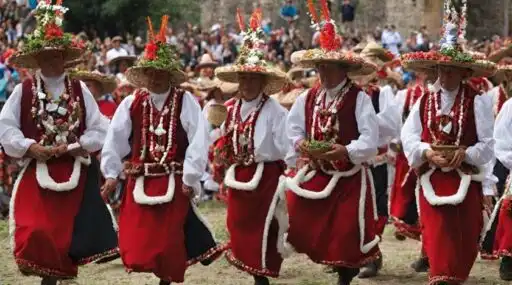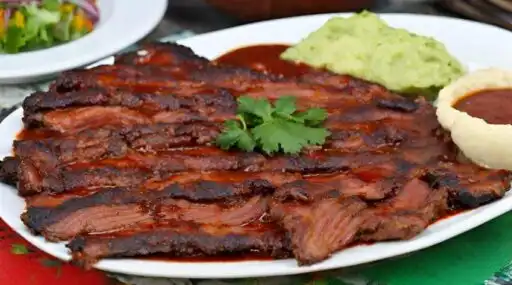Gastronomy of Argentina is a gastronomic marvel, a reflection of the country’s vast landscapes, rich cultural heritage, and a deep-rooted love for food and wine. Argentina, famous for its grass-fed beef and world-class wine, offers a diverse culinary experience that combines indigenous influences, European traditions, and a unique South American touch. In this exploration of Argentina’s cuisine, we will delve into its historical roots, iconic dishes, renowned wines, the tradition of the asado (barbecue), and its influence on the global culinary scene.
Historical Roots:
Argentina’s cuisine has deep historical roots, with indigenous, Spanish, and Italian influences shaping its culinary identity. The indigenous peoples of Argentina, such as the Mapuche and Guaraní, cultivated native crops like maize, beans, and potatoes, which are still integral to the Argentine diet.
Spanish colonization in the 16th century brought European ingredients, such as wheat, livestock, and olives, to the country. The introduction of beef cattle to the Pampas region marked the beginning of Argentina’s love affair with meat, setting the stage for the country’s renowned beef industry.
Iconic Dishes:
Argentine cuisine is famous for its iconic dishes that are beloved both within the country and around the world. These dishes encapsulate the essence of Argentina’s culinary heritage and tradition. Some of the most famous Argentine dishes include:
- Asado: The Argentine barbecue, or asado, is a revered national tradition. It typically includes cuts of beef like ribs, sirloin, and chorizo sausages cooked over an open flame or hot coals. Asado gatherings are not just about the food but also the social experience.
- Empanadas: These savoury pastries filled with a variety of ingredients, including beef, chicken, ham, and cheese, are enjoyed as a snack or appetizer. Each region of Argentina has its own take on empanadas, with different fillings and preparations.
- Milanesa: A breaded and fried meat cutlet, often made with beef but also with chicken or veal. It is similar to the Italian dish, veal Milanese.
- Matambre a la Pizza: Matambre, a cut of beef, is grilled and topped with pizza ingredients such as tomato sauce, cheese, and herbs, creating a unique fusion of Argentine and Italian flavours.
- Humita: A steamed corn cake made from a mixture of grated fresh corn, cheese, and spices, wrapped in corn husks.
- Provoleta: A dish made by melting provolone cheese in a skillet, often with added spices like oregano, red pepper flakes, and garlic. It’s usually served with bread for dipping.
Renowned Wines:
Argentina is equally famous for its wine as it is for its beef. The country is the fifth-largest wine-producing nation in the world and is well-known for its Malbec wine. The province of Mendoza, nestled at the foothills of the Andes Mountains, is Argentina’s most significant wine region, accounting for over two-thirds of the country’s wine production.
Malbec, a red wine variety, is Argentina’s flagship grape. The wine is known for its deep colour, rich fruit flavours, and velvety texture. It pairs beautifully with Argentine beef and has achieved international acclaim. Beyond Malbec, Argentina produces a wide variety of other wines, including Cabernet Sauvignon, Torrontés, and Bonarda, each offering its unique character and flavours.
Tradition of the Asado (Barbecue):
The tradition of the asado, or Argentine barbecue, is deeply ingrained in the country’s culture. It’s not just a meal; it’s a social event, a celebration of life, friendship, and the art of cooking over an open flame. Asado gatherings are a cherished part of Argentine life, often held on weekends and special occasions.
The preparation of the asado is an art form, with the choice of wood, the arrangement of the coals, and the seasoning of the meat all requiring skill and expertise. Various cuts of beef, including ribs, sirloin, and flank steak, are grilled over the fire, each offering a distinct texture and flavour. Chorizo sausages, morcilla (blood sausage), and provoleta (grilled provolone cheese) are often part of the asado spread.
The asador (grill master) takes pride in their role, ensuring that the meat is cooked to perfection, with the right balance of crispy exterior and juicy interior. The asado is usually accompanied by chimichurri, a flavorful sauce made with garlic, parsley, vinegar, and spices.
Influence on the Global Culinary Scene:
Argentina’s culinary influence has reached far beyond its borders. The popularity of Argentine steakhouses, known as parrillas, has spread globally, with restaurants serving juicy steaks and empanadas in cities around the world. Argentine wine, particularly Malbec, has achieved international recognition and is enjoyed by wine enthusiasts worldwide.
In recent years, Argentine chefs have gained prominence on the global stage, bringing their unique take on traditional Argentine dishes to international kitchens. Renowned chefs like Francis Mallmann, Mauro Colagreco, and Narda Lepes have made significant contributions to the culinary world, offering innovative interpretations of Argentine cuisine.
Challenges and Opportunities:
Argentina’s cuisine faces various challenges and opportunities. While the tradition of the asado and the love for meat is deeply rooted in Argentine culture, there is growing awareness of the need for sustainable and ethical meat production. Initiatives that promote responsible farming and environmentally friendly practices are gaining traction.
Additionally, there is an increasing interest in culinary diversity and exploring other ingredients and cuisines beyond the classic Argentine meat-centric dishes. Chefs and food entrepreneurs are embracing modern culinary trends while respecting traditional flavours and techniques.
In conclusion, Argentine cuisine is a delectable journey through a country that embraces the art of cooking, the joy of gathering, and the pleasure of savouring life’s simple yet exquisite pleasures. From the asado gatherings on a Sunday afternoon to the richness of Malbec wine, Argentine cuisine embodies the country’s love for its land, its culture, and its food. Whether indulging in a perfectly grilled steak in Buenos Aires or sipping a glass of Malbec in a wine bar in Mendoza, the essence of Argentine culinary tradition is a celebration of flavour, heritage, and the pleasure of the table.

















































Leave a Reply